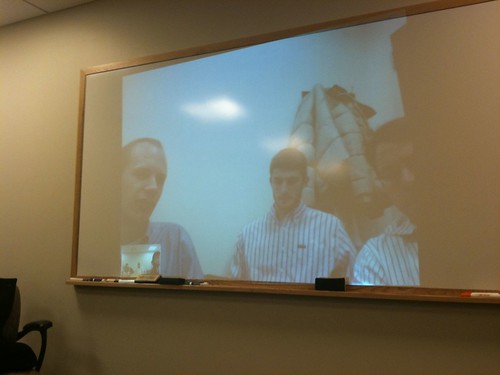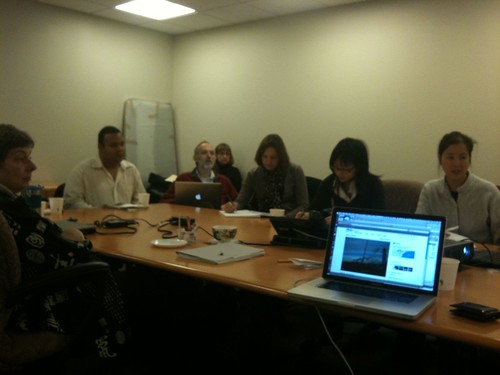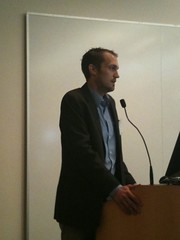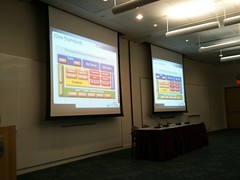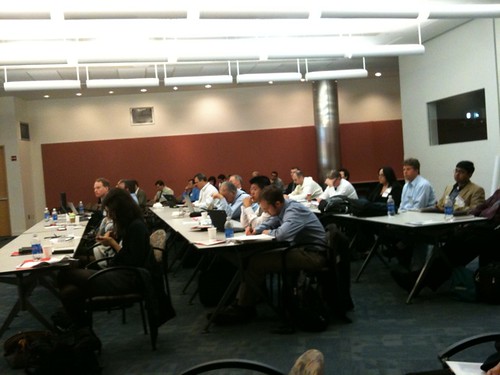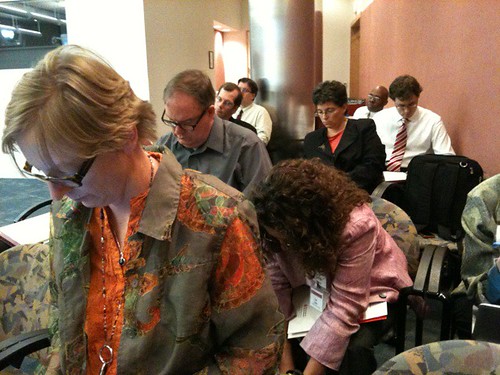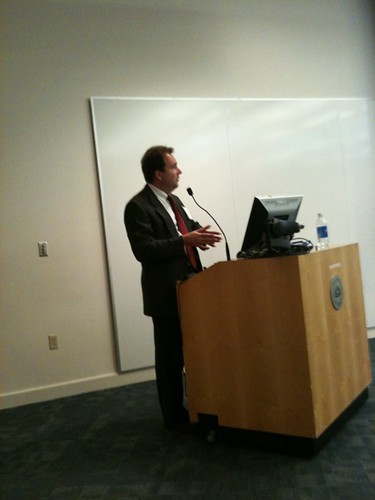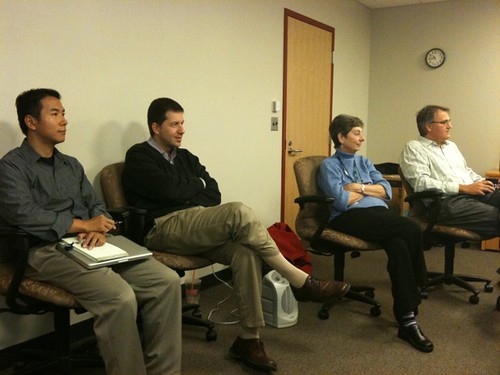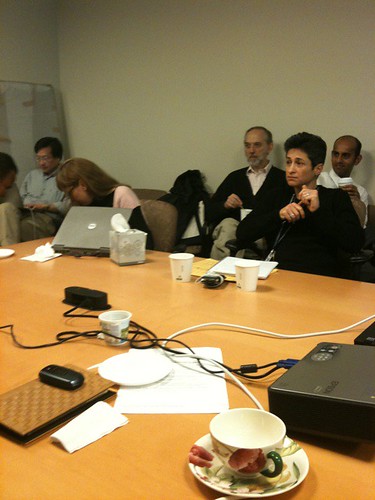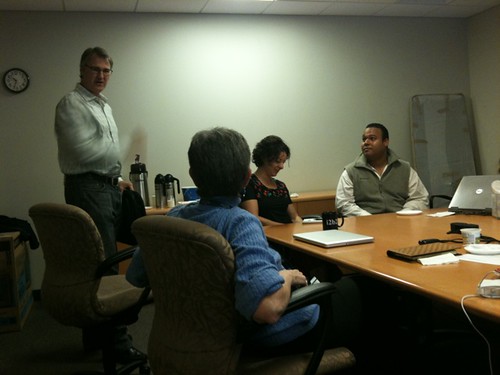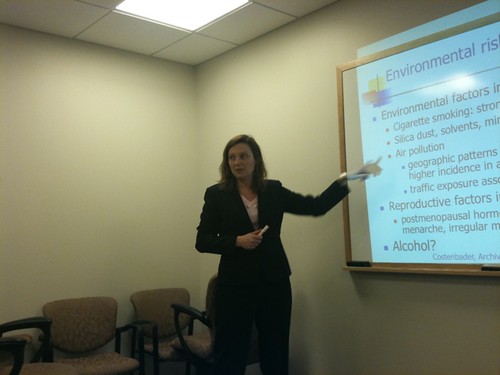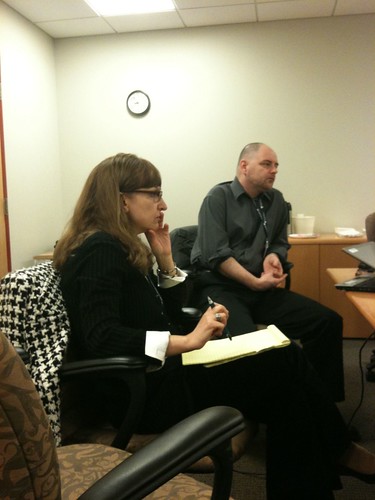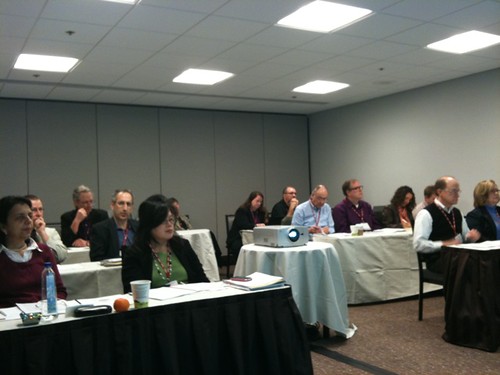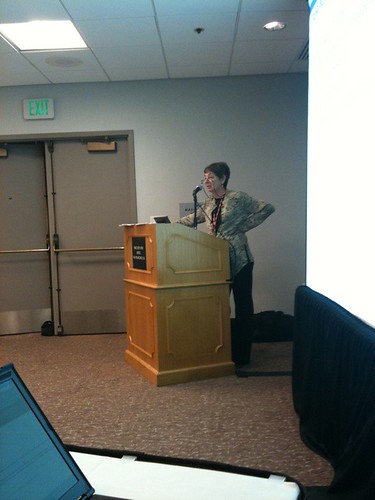Gainer, Cai, Savova, Ashwin, Plenge, Sordo, Kohane, Raychaudri, Karlson
Focus on Inflammatory Bowel disease today.
Reviewed disease itself: Peak incidence:14-24 (second peak between 50-70 years).
Not an autoimmune disease (auto-antibodiesa not found against human antigens) but the immune system plays an important pathogenic role. Smoking is an important risk factor for IBD but in very specific ways:
Past smoking increases risk of ulcerative colitis but current smoking increases the risk of Crohn's disease.
Reviewed previously implicated genes in linkage and GWAS studies. Reviewed clinical course and treatment. Reviewed epidemiological evidence regarding cardiovascular disease in IBD.
Concluded with a discussion of the IBD component of the auto-immune-CVD datamart.
